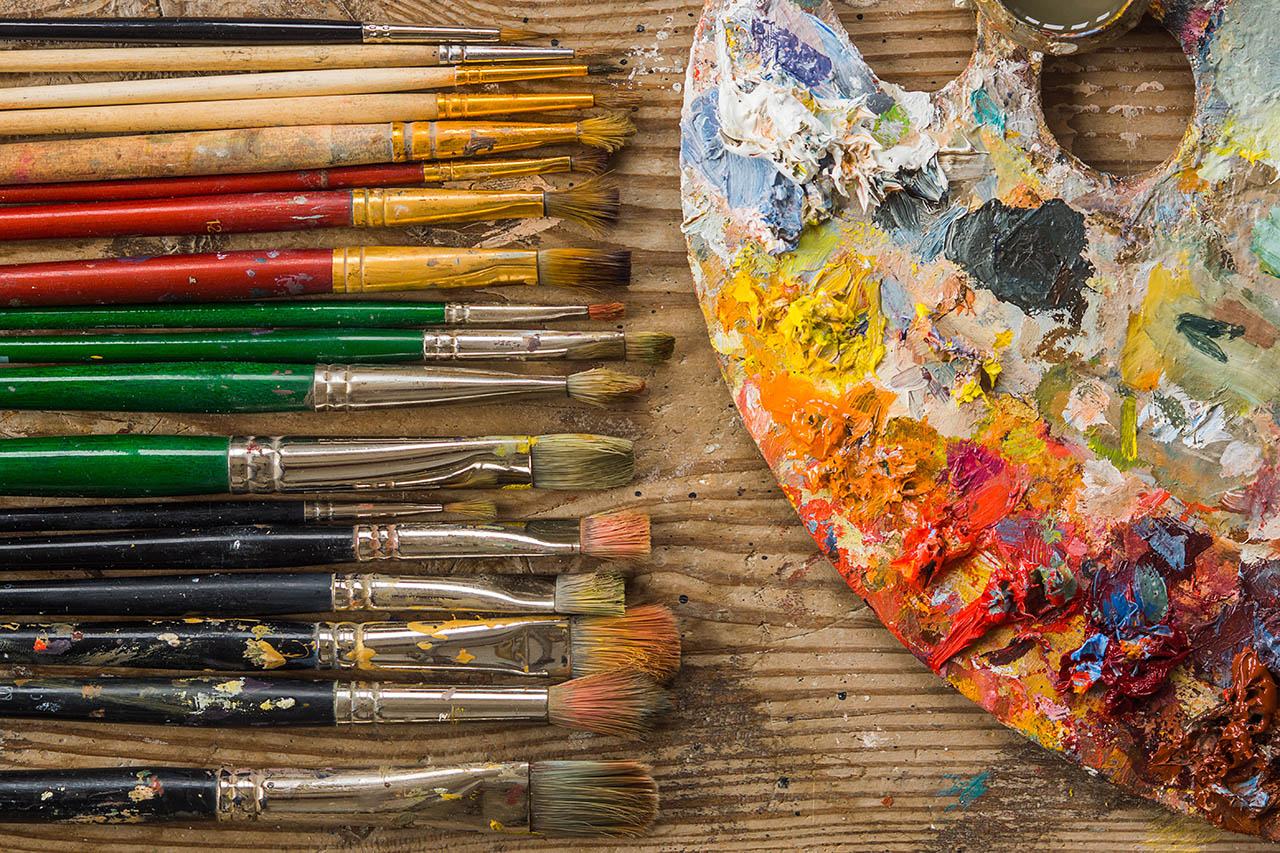Do you sometimes feel like you're hearing Martian talk when you find yourself in an art gallery?
If so, this simple little glossary will help you! It is never easy to understand everything in a world overloaded with information like ours, which is why we have made a selection of the artistic language most commonly used in our galleries. In the hope that you can fully assimilate into this beautiful world of the arts!
Figurative
The figurative is what we can all recognize. A familiar representation of the physical universe, works composed of a subject, a setting, characters. We can unequivocally determine the theme of the work in question.
Known examples: The Mona Lisa by Leonardo da Vinci, The Raft of the Medusa by Théodor Géricault or even American Gothic by Grant Wood.
Abstract
Antonym of figurative, abstract art will turn your mind. Without ever being precise, it is a mixture of shapes and colors which leaves room for free interpretation, all horizons combined!
Known examples: Composition 8 by Wassily Kandinsky, Broadway Boogie Woogie by Piet Mondrian and also Marsan II by Victor Vasarely.
Contrast
A contrast occurs when two things of a different nature are found side by side, with the aim of capturing the attention of the viewer, or of exposing the major difference of the subjects concerned. In a simple way, we could compare the color blue and the color red. These are positioned at the two ends of the temperature scale, red hot like molten lava, and blue cold like a frozen lake. However, one must remain open, a contrast can also be subjective. We can also create a contrast of materials, light and even contrasts of ideas!
Subframe
The false frame is the wooden structure which will serve as support for the canvas. We use two types of false frames, the single false frame and the double false frame. A work on a simple false frame will be of a lower thickness and may have to be framed at the client's discretion. Whereas a work on a false double frame will be much thicker and suitable for hanging without a frame. That being said, it is also possible and common to frame a work on a false double frame.
Medium
The medium(s) designate in plastic art the materials used for the design of the work. Mediums are diverse, varied and almost anything can become a medium. For example, the main medium for a drawing will be pencil, or even paint for a painting. When several mediums work together on the same work, we then speak of mixed mediums. The combination of several materials and materials.
Epoxy
Epoxy is a polymer that can be used as a glue or resin, which gives a rigid, transparent finish resembling plastic. It is often used to give relief and a glossy finishing effect. It is a relatively modern medium that more and more artists enjoy using.
Plexiglass
Acrylic glass or Plexiglass , its most commonly used trade name today, is also a polymer with a plastic-like appearance. This can be dyed or transparent, and is used for several purposes in the arts, including printing. We are then talking about a print on Plexiglass .
Giclée
A giclée is a high-definition inkjet art print, which can be made on a variety of media. It is perfectly adequate and greatly appreciated by artists for its fidelity of reproduction, in terms of colors and textures. Once the print is completed, the giclée is mounted on a false frame and then varnished, to simulate the quality of the original work.
Summary
This little glossary is only a fragment of the entire artistic vocabulary used throughout the world, but these are the terms most frequently used in our galleries, there is no point in complicating life! Now you will be sure to anticipate everything and no longer be confused when one of these words comes up in exciting discussions.




Partager:
Embracing the Artistic Renaissance: A Glimpse into Fine Art's Tech-Infused Future